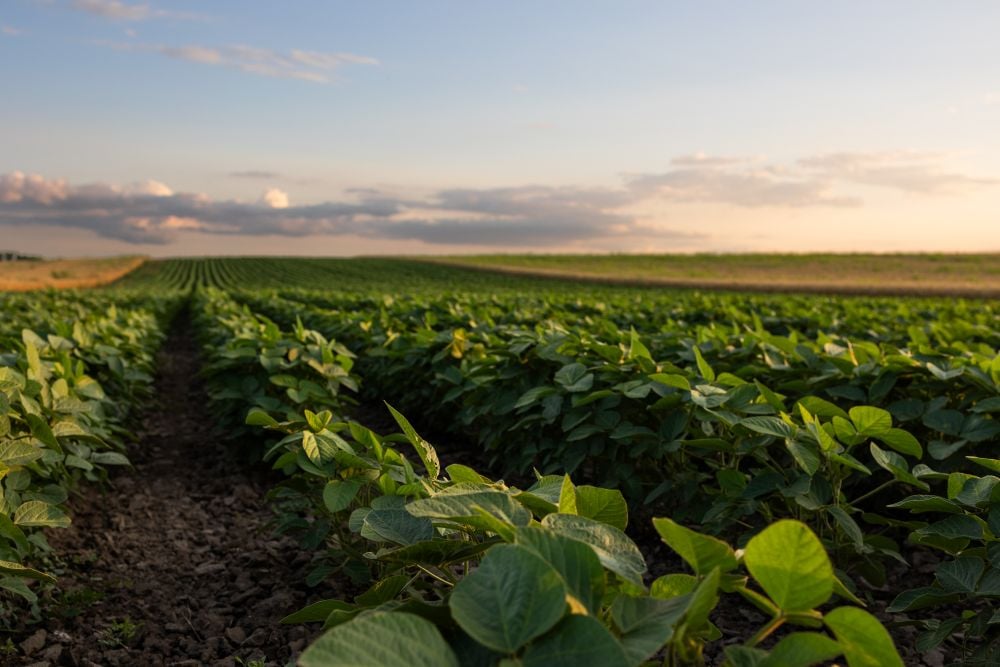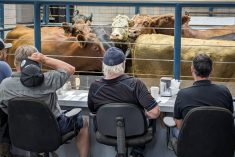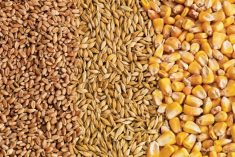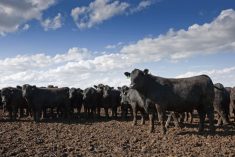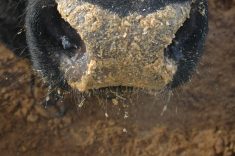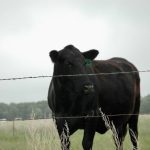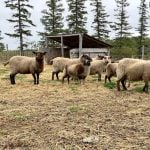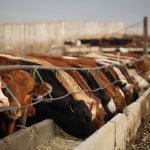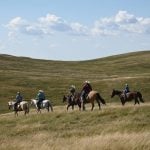Compared to last week, Western Canadian yearling steers traded $4 to $8 lower while heifers were down $2 to $4. Calves traded $5 to as much as $10 below week-ago levels. Feed barley in the Lethbridge area traded in the range of $390/tonne to as high as $415/tonne, up $25-$30/tonne from seven days earlier. Crop ratings continue to deteriorate and there were no firm offers for new crop positions. Feedlot operators lowered their bids accordingly in an effort to preserve feeding margins. Those operators that had no new crop feed grain coverage were totally absent.
Read Also

U.S. grains: Soy hits 17-month high, corn to four-month top as trade braces for U.S. data
Chicago Board of Trade soybean futures rose on Thursday to their highest in nearly 17 months as traders awaited a U.S. government crop report that was expected to lower yield estimates, while also bracing for the resumption of export data to give clues on Chinese buying.
Yearlings weighing over 950 pounds didn’t experience much slippage because of less feed grain usage; however, quality 850-pound yearling steers were down $12 to $15 from earlier in June. Steers weighing 550 pounds were readily trading around $240 earlier in summer were now around $220. The drought is starting to take a toll; there is no doubt about it. It’s not that ranchers are liquidating cattle earlier than usual; it’s the uncertainty in feed grain prices that’s having more of an effect on the feeder market.
In East-Central Alberta, mixed steers weighing 990 pounds were valued at $179 and mixed heifers weighing 875 pounds were quoted at $174. In Southern Alberta, tan steers weighing 860 pounds were valued at $189 landed in the feedlot but keep in mind the barley around Lethbridge is in good shape due to irrigation. Similar cattle in Central Saskatchewan were $5 to $8 lower. North of Calgary, mixed heifers weighing 850 pound were reported at $177. Some feedlot operators were more aggressive on heifers which caused the steer/heifer spread to narrow. Many auction barns in Western Canada are starting feature yearling sales over the next couple weeks. Buyers also felt they could wait. Ideas are that prices for yearlings will come under pressure when larger groups come on the market.
Calves were quite variable across the prairies. In Eastern Saskatchewan, there were 500-525 pound steers trading in the range of $230 to as high as $238; however, in east central Alberta, Angus blended steers averaging 560 pounds were quoted at $218. South of Edmonton, mixed steers averaging a shade over 600 pounds were valued at $210. Mixed heifers weighing 560 pounds dropped the gavel at $181 in the same region. Small groups were on offer and many singles or couple were running through the ring. The market for calves was hard to define.
Canada is coming off a historical tight carryout which means prices are also at historical highs. Looking forward, the Canadian barley crop is expected to finish in the range of 8.4. to 8.9 million tonnes; the five-year average (2015-2019) production is around 8.7 million tonnes. The crop always turns out better than expected. The media is hyping up drought conditions so this is likely the top of the market. Keep in mind that average provincial readings can be misleading. For example, the Alberta crop report rated the barley crop in Central Alberta 66 per cent good to excellent.
— Jerry Klassen manages the Canadian office of Swiss-based grain trader GAP SA Grains and Produits Ltd. and is president and founder of Resilient Capital, specializing in proprietary commodity futures trading and market analysis. Jerry consults with feedlots on risk management and writes a weekly cattle market commentary. He can be reached at 204-504-8339 or via his website atResilCapital.com.

